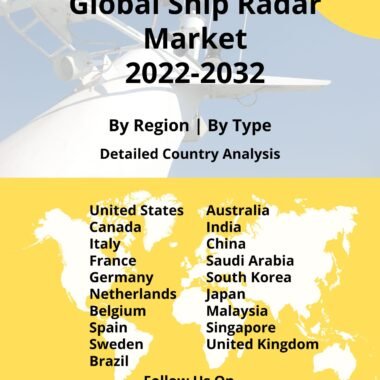Description
5G in Defense Market
Frequently Asked Questions of 5G Defense Market
5G in defense market size In order to connect practically everyone and everything together, including machines, objects, and gadgets, 5G enables a new type of network. 5G in defense forecast is to provide more users with faster multi-Gbps peak data rates, extremely low latency, enhanced reliability, vast network capacity, and a more consistent user experience. 5G in defense market trends are enabled by increased performance and efficiency, which also connects new industries. The same radio frequencies that are currently utilized for satellite communications, your smartphone, and Wi-Fi networks also support 5G, but it allows for much greater technological advancement.
5G is actually about connecting things everywhere – consistently, without lag – so people can measure, understand, and manage things in real-time. 5G in defense market size goes beyond being able to download a full-length HD movie to your phone in seconds (even from a crowded stadium). The theoretical top speed of 5G in Defense growth is 20 Gbps, compared to 1 Gbps for 4G. Lower latency is another benefit of 5G, which can enhance the performance of corporate applications and other digital experiences (such as online gaming, videoconferencing, and self-driving cars). While past cellular technology generations (such 4G LTE) concentrated on guaranteeing connectivity, 5G takes connectivity to the next level by providing connected experiences to customers from the cloud. Cloud technologies are utilized by 5G networks, which are virtualized and software-driven.
A number of military and defense applications will benefit from the high speed, increased capacity, and lower latency Internet network provided by the fifth-generation mobile network technology, or 5G. Simply said, 5G in defense market growth to raise the bar for network performance compared to the current standard (4G LTE). With its extremely high data speeds and nearly instantaneous real-time transmissions, 5G will bring about a new digital revolution in warfare.
Particularly when 5G is paired with other breakthroughs like the defense cloud and artificial intelligence, new capabilities will allow units in the theatre of operations to communicate in an immersive digital realm and be protected in real-time. The capacity to rapidly deploy small, lightweight systems into the challenging operational situations. The security knowledge necessary to satisfy the rigorous demands of the defense industry. 5G in defense market growth will work seamlessly with other defense communications options like line-of-sight radio, satcom, and combat net radio because in high-intensity conflict situations, protected tactical radio and longer-range transmission systems will still be needed for secure communications by field units.
Major factors driving 5G in Defense Market Growth
With the widespread use of 5G, electronic warfare (EW) and spectrum-management applications may also undergo change in the wake of the adoption of 5G designs. The deployment of 5G and its integration with intelligence, surveillance, and reconnaissance (ISR) systems may permanently change how the military gathers actionable intelligence.
Trends influencing the 5G in Defense Market Size
The 5G in Defense market analysis the requirement or high bandwidth low latency communication link that will fuel the growth of the 5G market. The 5G in Defense market analysis the proliferation of unmanned systems will also drive the market. Unmanned surface vehicles (USVs) are crafts that operate on the surface of the water without any crew members present. These vessels can be remotely controlled by an operator on land or on another vessel thanks to a number of sensors and setups that were put into them. Similarly autonomous land platforms are also seeing considerable growth. Autonomous land platforms and remotely operated platforms will require low latency 5G communication.
5G in Defense Market Forecast & Dynamics
5G in defense analysis the increasing defense spending which will drive the market for new procurement activities and upgrades to existing platforms with newer technologies and capabilities. The increase in defense spending will encourage procurement of 5G communication systems. Procurement will also be driven by prevailing geo political conditions in Europe and the Asia Pacific. Proliferation of autonomous and unmanned platforms in these regions will be one of the key drivers of the 5G market.
5G in Defense Market Analysis for Recent Developments
5G in defense market reports the Indian Army seeks high-speed communication at 18,000 feet while China launches 5G at LAC. A Request for Information (RFI) for technology to support 4G and 5G mobile cellular networks in challenging terrain has been released by the Indian Army. The Indian Army field formations stationed in the mountainous/semi-mountainous/high altitude region will use the proposed network (up to 18,000 feet). The RFI states that the network’s purpose is to deliver dependable and secure voice messaging and data services to meet field formation operating needs. Within a year of contract signing, the Army wants to finish the network, including execution.
Next month, the Pentagon will launch a new Open Stack 5G Challenge to encourage business to create open-architecture technologies that could be incorporated into test beds in the future. In order to speed the creation of an “open 5G stack ecosystem,” the National Telecommunications and Information Administration and the U.S. Department of Defense have partnered on this endeavor. It builds on a notice of inquiry that was released in January. In its budget request for fiscal 2021, the department has identified 5G as a top modernization priority and requested $1.5 billion for 5G and microelectronics projects. DoD declared in 2020 that it will spend $600 million on installing 5G test beds at five military facilities across the country.
The market is poised to revolutionize military communication, connectivity, and operational capabilities, marking a significant leap forward in defense technology. The implementation of 5G networks in the defense sector represents a transformative shift, offering ultra-fast, low-latency communication, and unlocking a plethora of applications, from real-time situational awareness to connected autonomous systems. The market is experiencing robust growth, driven by the need for high-bandwidth, secure, and resilient communication infrastructure to support the diverse requirements of modern defense operations. 5G’s ability to handle massive data volumes, enable edge computing, and support a myriad of connected devices enhances the agility and effectiveness of defense networks.
Technological innovations within the 5G in Defense market include the integration of network slicing, artificial intelligence, and enhanced cybersecurity measures. These innovations contribute to the creation of dynamic, adaptive, and secure communication networks tailored to the specific needs of defense applications.
Geopolitical considerations and the imperative for maintaining technological superiority drive investments in 5G capabilities globally. In 2023, the global 5G in Defense market signifies a commitment to leveraging cutting-edge connectivity solutions, ensuring that defense forces are equipped with the advanced communication infrastructure needed to address the complexities of contemporary security environments.
![Global_5G_in_Defense_Market_2024-2034[1] Global 5G in Defense Market](https://aviationanddefensemarketreports.com/wp-content/uploads/2022/08/Global_5G_in_Defense_Market_2024-20341.jpg)






